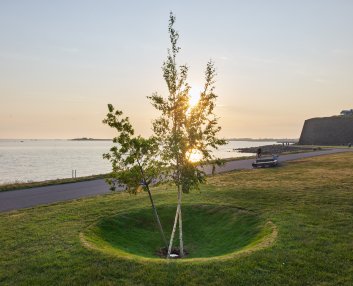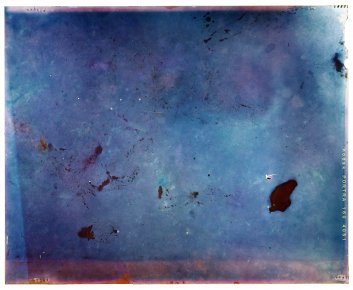The work evolves around a body found in the Bockstens bog in 1936. The body showed out to be 700 years old, a medieval man murdered and nailed to the bog with three poles; one of oak piercing the heart and two birch poles through the abdomen. Theory suggests that the poles were put there to keep him from haunting his murderers.
The bog is a place where humus and its acid rules. The acid has a preservative effect on animal fiber and conserved parts of the body and his clothes made by wool, throughout the centuries. Like an image of the past residing in the bog.
The corpse from the bog is unique in its kind and since it was found it has been located at Halland Museum of Cultural History in Varberg’s fortress.
We were invited in May 2019 to make a site specific piece for the exhibition
(X)-sites, a Land Art project along the west coast of Sweden.
We chose to interact with the bog itself to make Bogogrammes, using sheet film and linen fabric. They were buried at the finding place in Bockstens bog. The film was exposed for 24 hours through white moss and peat. Deep down in the bog, the acid environment has affected the animal gelatin layer of the sheet film. The linen piece shows the red color of the humus acid that stained the dead mans hair and clothes.
The Bogogrammes were presented in the Bocksten room at the Halland Museum of Cultural History.
For the site-specific piece we were given a designated place. On the grass area below the fortress we decided to make a comment on the old murder. The work can be seen as a memorial where the pit symbolizes the inverted tumulus, the trees are the poles that will continue to grow in bog material and humus acid, obtained from Bocksten just a few miles away.

